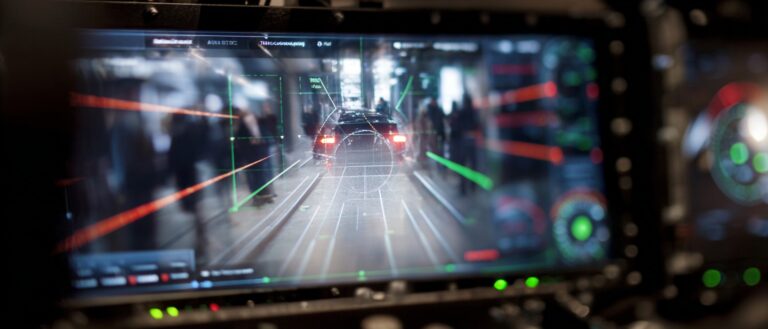Use Algorithms to Avoid Food Poisoning and Make This Summer More Peaceful

In summer, food poisoning often occurs, and serious cases can even threaten life. Regarding the food safety issues in restaurants, some researchers have used machine learning technologies such as natural language processing and computer vision to help health departments identify potential food safety risks and help create a more friendly dining environment.
News reports of food poisoning are common. According to the Russian Satellite News Agency, on July 6, local time, a tour group of 15 Chinese tourists felt unwell after dining at the Shanghai Hotel in St. Petersburg.Food poisoning symptoms, and was subsequently sent to the hospital for treatment.
The hotel involved was later found to haveFood safety risksThe report revealed a number of problems in the restaurant, such as meat and vegetables not being washed separately and tableware not being cleaned properly. The local Consumer Rights Protection and Public Welfare Supervision Bureau intervened in the investigation, and the restaurant was later ordered to close.
In summer, food poisoning incidents enter a high incidence season.Sometimes, there are even serious large-scale collective poisoning incidents. These cases often have adverse effects and should not be taken lightly.

Food poisoning is ruining your summer
Food poisoning can cause physical discomfort, with common symptoms including severe vomiting and diarrhea, accompanied by pain in the upper and middle abdomen. Vomiting and diarrhea often lead to dehydration, dry mouth, sunken eye sockets, loss of skin elasticity, cold limbs, weak pulse, low blood pressure, etc. Severe cases may lead to shock.

The serious term for food poisoning is foodborne illness.Usually caused by contaminated food or drinking waterIn addition to foods that are poisonous in themselves (such as poisonous mushrooms), there are also factors such as improper processing methods and food ingredients being contaminated by pathogenic bacteria.
The temperature is high in summer, and many foods can become sources of poisoning if not properly stored and handled, including spoiled meat, eggs, dairy products, cold dishes, leftovers, etc.

Although food safety issues are becoming more and more important, there are always some unintentional or deliberate behaviors that turn food that could fill your stomach into poison. Food supervision usually relies on inspections and supervision by regulatory authorities, but with so many restaurants today, traditional methods are far from enough.
But some new methods are becoming effective tools for maintaining food safety.Through data information such as user comments on the Internet, with the help of machine learning methods such as natural language processing, which can open up some breakthroughs and help people identify restaurants with problems.
Google and Harvard team up to pinpoint problematic restaurants
Researchers from Google and Harvard University, published a study on ensuring food hygiene by creating a machine learning model FINDER, using Google search history and location information from people’s phones to identify restaurants that pose safety risks.

"Machine-learned epidemiology: real-time detection of foodborne illness at scale"
The main body of FINDER is divided into two parts.Web Search Model (WSM)andLocation Model (LM).
WSM identifies search queries for foodborne illness, such as "stomach cramps", "vomiting", "diarrhea" and other words related to food poisoning.
LM finds out the restaurants that the user has visited, and obtain the restaurant’s location information while ensuring data anonymization.
Finally, FINDER found a suspicious restaurant.Evidence of foodborne illness is presented to health authorities through algorithmic analysis.
FINDER uses a variety of information to evaluate, for example, the indicators included in the analysis are the actual incidence of foodborne diseases in the population, rather than the total number of queries. This can eliminate some interference factors, such as searches conducted by medical personnel for academic purposes.

And because the incubation period for food poisoning can be as long as three days, FINDER can accurately determine which restaurant is most likely to have problems based on information from multiple people and the number of searches within three days of leaving the restaurant.
FINDER was deployed in Las Vegas and Chicago in 2016.Of the suspicious restaurants identified by FINDER, 52.3% were deemed unsafe during inspection, while conventional methods accurately determined only 24.7%.
Find clues from restaurant reviews to help foodies
Since 2012, the New York City Department of Health has used a similar approach, using Yelp Using data from Foodsafe, the largest review site in the U.S., which monitors food safety issues, they found a total of 10 possible sources of large-scale foodborne illnesses.

In 2016,University of RochesterResearchers, helped the health department develop an app nEmesis, using natural language processing methods,Identify tweets related to food poisoning from platforms such as Twitter and link them to restaurants using geotags to help health departments conduct efficient investigations.
The researchers estimate that this approach has led to significant improvements.Las Vegas saw 9,000 fewer food poisoning cases and 557 fewer hospitalizations.
In addition to analyzing social comments, another method that is emerging is to conduct real-time supervision through video data during the food production process.
In our previous reports,For example, a pizza-making company uses technologies such as cameras and computer vision to strictly enforce pizza production standards.(Click on the text to jump to read)
Under construction "Open kitchen and bright stove"In the project, customers can see the operation scenes in the back kitchen through glass or video, which is somewhat deterrent to food hygiene.

There are also some companies such as Chick-fil-A,Starting with computer vision, we monitor the cleaning and disinfection, food processing, and production processes of staff.Their system can detect abnormal behavior in operations and take measures such as warnings, but this technology is still being improved.
Respect food and take responsibility for food safety
There is a well-known idiom that food is the first necessity of the people. But the era we live in does not seem to be friendly to food. Every once in a while, there are food safety issues exposed.Eating safely is becoming increasingly difficult.
Fortunately, research on foodborne diseases is using large amounts of data combined with machine learning methods to help us avoid pitfalls.
The history of Chinese food culture is almost as long as the history of Chinese civilization. In addition to filling the stomach, people have given food more cultural meanings and have various pursuits and explorations in eating.
But whether it is the variety of cuisines or the rich and colorful cultural background behind them, they all stem from the respect and awe for food.

In contrast, today, with abundant material resources, people seem to be more casual about food and less respectful.
Through some technical measures, the harm caused by food poisoning can be eliminated as a whole. However, no matter what method is used, the most unsolvable thing is people’s responsibility for diet.








